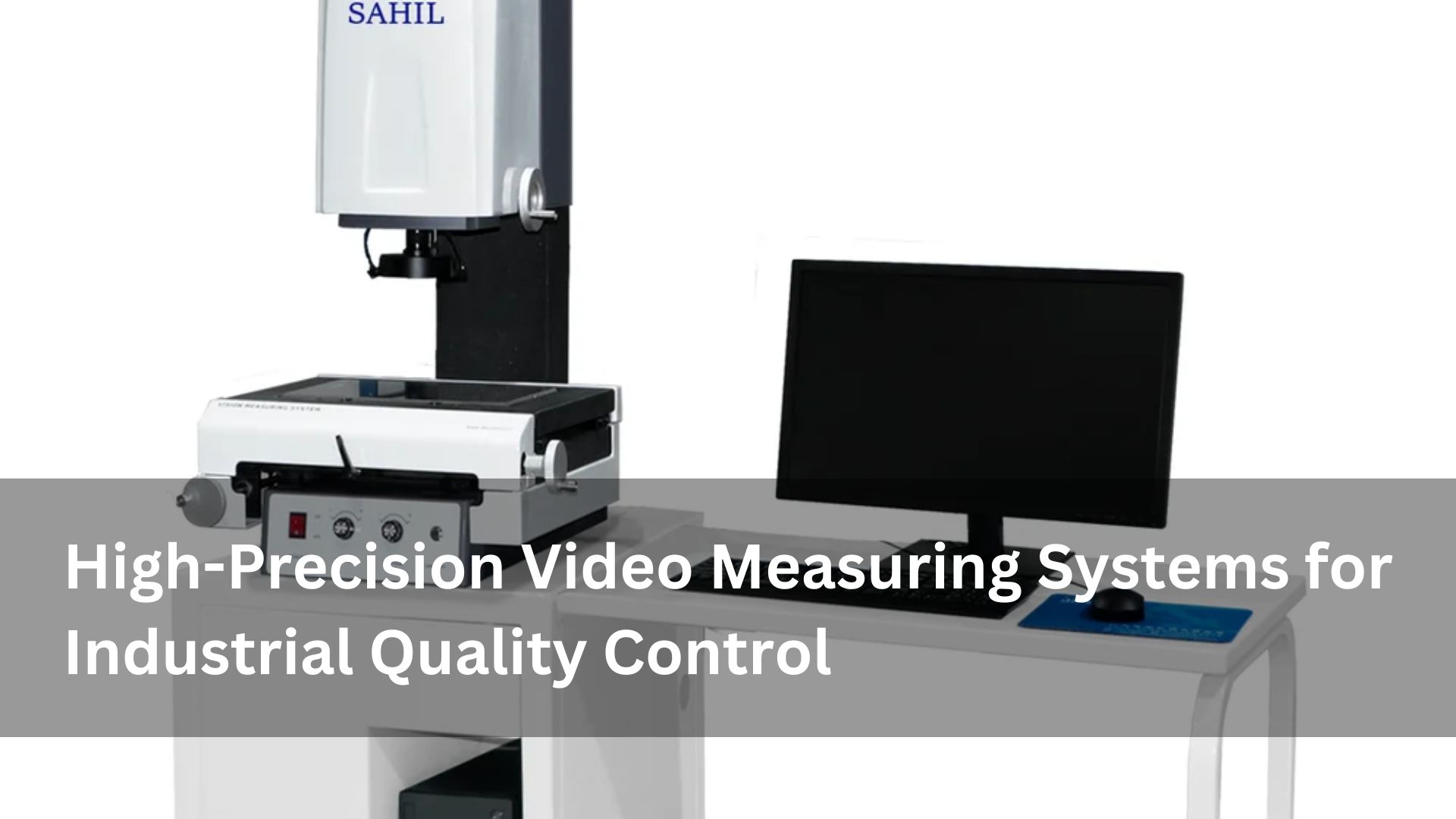In today’s competitive manufacturing landscape, accuracy and precision are paramount. Even the slightest measurement deviation can result in product failure, increased waste, or costly recalls. This is where video measuring systems come into play. These advanced, non-contact inspection tools have transformed the way industries conduct dimensional analysis and quality assurance. Combining optics, cameras, and software, video measuring systems deliver precise measurements for complex components across various sectors.
From electronics and aerospace to medical devices and automotive parts, video measuring systems offer high-resolution imaging and exacting detail that traditional methods can’t match. Their efficiency, repeatability, and ability to handle micro-components make them indispensable in any modern quality control process.
What Are Video Measuring Systems and How Do They Work?
Video measuring systems are non-contact inspection machines that use optical cameras and image processing software to analyze the dimensions of objects. These systems capture real-time images of the component under test and perform detailed measurements using software algorithms.
By integrating lighting systems, motorized stages, and powerful zoom lenses, video measuring systems provide high magnification views to ensure accurate results. The system compares the captured image to preset measurement parameters to evaluate shape, length, height, angles, and more—all without touching or damaging the object.
Benefits of Using Video Measuring Systems in Industrial Applications
The implementation of video measuring systems brings several significant benefits to industrial quality control processes:
High Accuracy: Achieve micron-level precision even on the smallest parts.
Non-Contact Measurement: Prevent surface damage or deformation.
Time Efficiency: Speed up inspection processes with automation.
Repeatability: Ensure consistent measurements across multiple parts.
Data Recording: Store and analyze measurement data for traceability and quality audits.
These advantages make video measuring systems essential for manufacturers looking to enhance product reliability and maintain regulatory compliance.
Industries That Benefit Most from Video Measuring Systems
Various industries leverage video measuring systems for their unmatched precision and speed:
Electronics Manufacturing: Measure tiny PCB components and microchips.
Aerospace: Validate critical dimensions of complex parts.
Medical Device Manufacturing: Inspect delicate surgical instruments and implants.
Automotive: Check gears, valves, and intricate engine parts.
Tool and Die Making: Validate tools used in high-precision machining.
The versatility of video measuring systems makes them a reliable asset across sectors that demand perfection.
Industrial Electrical Installations by Skilled Electrical Contractors in Malaysia
Industrial environments demand heavy-duty electrical systems designed to power machinery, processing units, and safety mechanisms. Electrical contractors in Malaysia with industrial experience understand the complexities of high-voltage systems and offer:
Motor control and distribution panels
Machine wiring and grounding
Hazardous area installations
Power factor correction
Maintenance of industrial switchgear
These specialists work under stringent timelines and safety protocols to keep your plant operational without compromising on compliance.
Types of Video Measuring Systems Available
Manufacturers can choose from several types of video measuring systems, depending on their specific application and budget:
Manual Video Measuring Systems: Operator-controlled systems suited for low-volume inspections.
CNC Video Measuring Systems: Automated and programmable for high-throughput environments.
2D Video Measuring Systems: Suitable for flat parts like washers, gaskets, and stamped components.
3D Video Measuring Systems: Provide dimensional depth and surface profile analysis.
Hybrid Systems: Combine contact and non-contact features for complex inspections.
Each type of video measuring system serves unique purposes and can be customized with optional add-ons like laser sensors, touch probes, and multispectral lighting.
How to Choose the Right Video Measuring System for Your Needs
Selecting the appropriate video measuring system involves understanding your inspection requirements:
Part Size and Complexity: Larger or more intricate parts may require 3D or hybrid systems.
Required Accuracy: Higher precision applications need advanced optics and image processing.
Volume of Inspections: Consider automation and CNC features for high-throughput operations.
Budget Constraints: Balance features and investment based on ROI expectations.
Environmental Conditions: Ensure the system can operate under factory conditions without performance degradation.
Consulting with experienced video measuring system providers can help match the right technology to your operational goals.
Integration with Quality Management Systems (QMS)
Modern video measuring systems offer seamless integration with QMS platforms, enabling real-time data transfer, analysis, and reporting. This digital connectivity streamlines workflows, enhances traceability, and supports continuous improvement initiatives.
By linking measurements directly to quality documentation, manufacturers can reduce manual entry errors, speed up audits, and maintain compliance with ISO and industry-specific standards. Video measuring systems become more than tools—they become integral components of a smart manufacturing ecosystem.
Maintenance and Calibration of Video Measuring Systems
To ensure ongoing accuracy and performance, video measuring systems require routine maintenance and calibration. Regular upkeep includes:
Cleaning lenses and optical components
Verifying software updates and firmware
Recalibrating axes and measuring scales
Performing validation checks using certified gauges
Working with certified service providers or the original equipment manufacturer ensures that your video measuring system maintains its performance over time and adheres to measurement standards.
Conclusion
As the demand for tighter tolerances and higher quality continues to rise, investing in video measuring systems is a strategic move for manufacturers seeking a competitive edge. These systems offer unmatched precision, flexibility, and speed—making them a cornerstone of modern inspection workflows.
By choosing the right video measuring system, companies can improve product consistency, enhance customer satisfaction, and reduce costly rework or recalls. Whether for a small workshop or a large-scale industrial plant, the adoption of video measuring systems represents a commitment to quality, innovation, and operational excellence.
Author
-

Becky Fung is a seasoned digital marketing expert with 15 years of experience driving growth across Singapore, Malaysia, Australia, and Hong Kong. With a strong background in editorial and research, she specializes in analyzing marketing trends across fintech, eCommerce, and the evolving crypto landscape. Passionate about data-driven strategies and emerging digital trends, Becky shares in-depth insights to help businesses stay ahead in the fast-paced digital world.
View all posts










